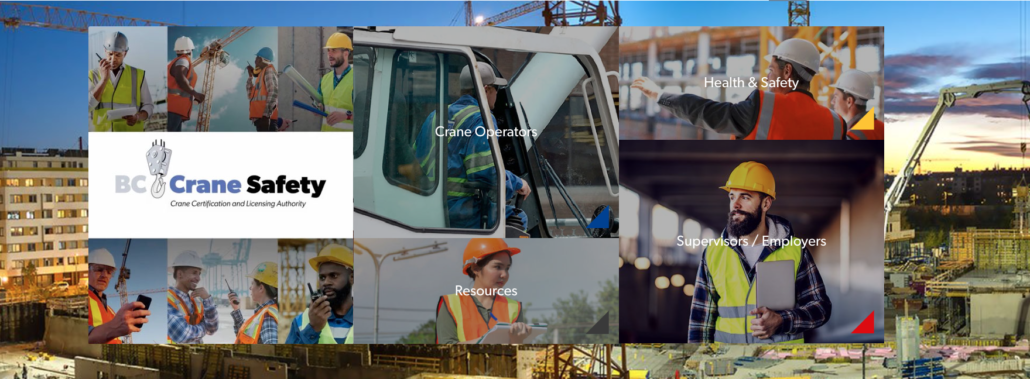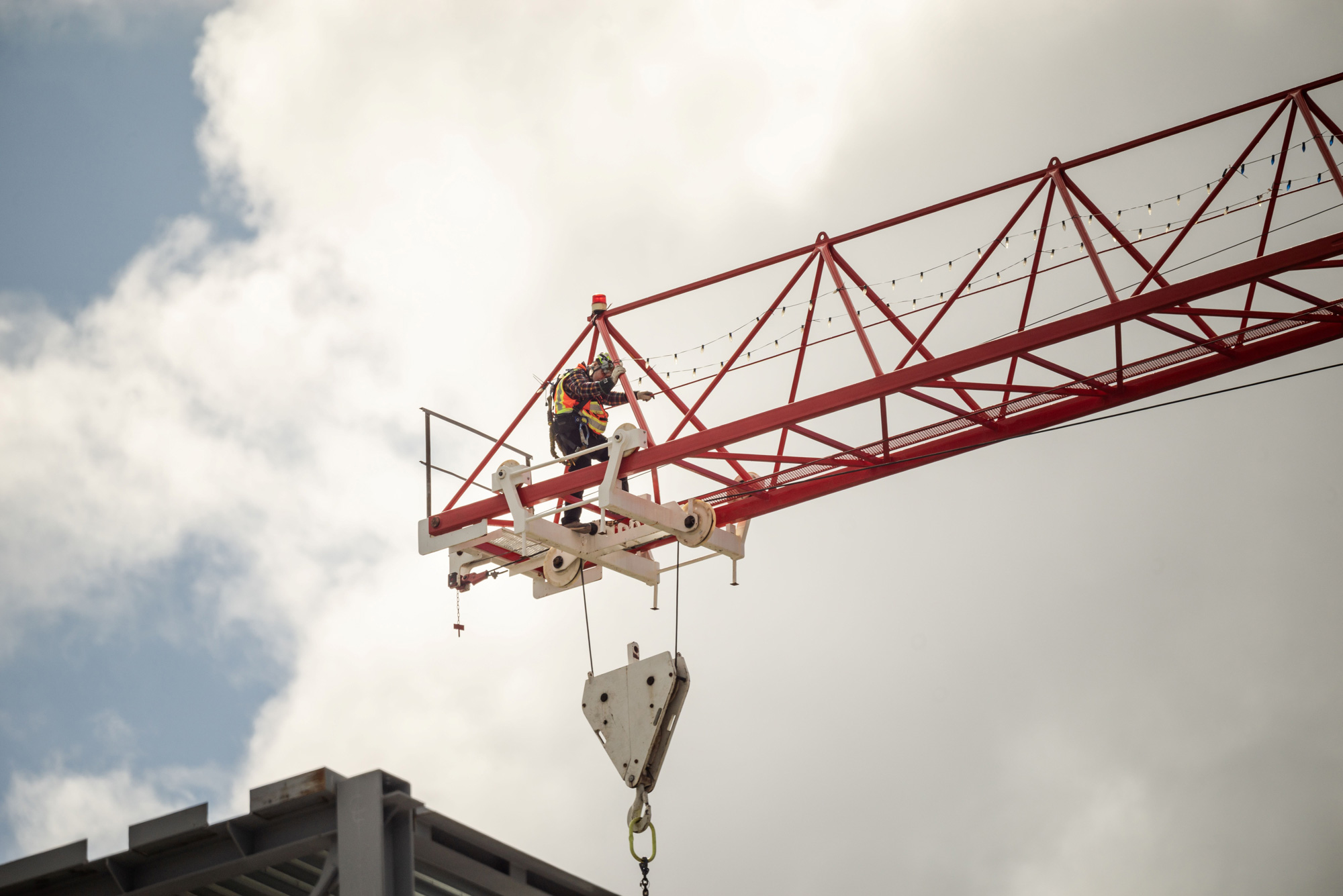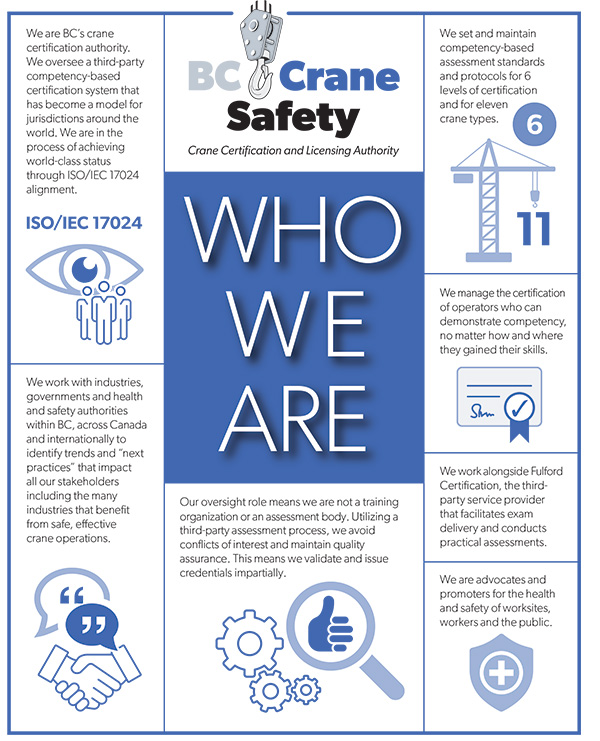BC CRANE SAFETY FALL 2023
Explore Crane Operation as a Career
The BC Construction Association (BCCA) launched the Builders Life campaign to promote careers in the trades. BC employers are looking for skilled tradespeople to meet their demands every day and there are great opportunities for crane operators.
On September 13, BCCA and BC Crane Safety (BCACS) co-hosted a follow-up webinar called “Explore Crane Operation as a Career”. Four guest crane operators including Gian Grewal, IUOE 115; Ralf Notheis, Big Foot Cranes; Doug Younger, WorkSafeBC; and Clinton Connell, BC Crane Safety, talked about their career paths and the numerous rewarding opportunities crane operations can offer. They also answered questions including some related to learning, achieving certification and ensuring worksite safety.
Do you know someone exploring the idea of becoming a crane operator? Please view and share the one-hour webinar.
Tower Crane Maintenance and Third-Party Inspections
BC Crane Safety (BCACS) met up with independent tower crane inspector, Greg Teslia, President of Crane Safety & Inspections Inc., and Mike De Jong, Manager of HS&E Ledcor, in August. We met on the site of a large student housing construction project on the BCIT campus in Burnaby, BC.
They welcomed us to sit in on an open and friendly discussion about the value of third-party tower crane inspections to prime contractors, their impact on safety, and what happens during an inspection.
Learn more about the importance of third-party crane inspections.
Planning for Work Around High-Voltage Equipment? “Plan for 10”
Electricity can flow through equipment, such as a crane, if it touches power lines. It can also jump across a gap from a line to an object that is close by. Incidents like this can cause severe injury and death. That’s why WorkSafeBC developed guidance materials and resources called “Plan for 10” to help everyone on the worksite plan to stay safe when working around high-voltage electrical equipment like power lines and conductors.
Learn more about “Plan for 10” and how BC Crane Safety (BCACS) is adapting it for a new SkillRecord Passport app that makes it easy to assess, document, and verify crane operator competencies. You can also get some handy items that help to keep safety top of mind when working around high voltage equipment.
WorkSafeBC Regulation Amendment – Tower Crane – Update
WorkSafeBC’s proposed amendments to Part 14, Cranes and Hoists, sections 14.73.1 to 14.75, of the Occupational Health and Safety Regulation has completed the consultation phase and will go to a public hearing – date and time to be announced.
Learn more about the process and view the proposed changes posted at www.worksafebc.com. To help prepare for the regulatory amendment to 14.74.1, BC Crane Safety (BCACS) created a downloadable reference check tool for the Notice of Tower Crane Project Form.
Q & A
Q: Where is the definition of a tower crane that states a tower crane is a crane attached to a base?
A: This definition is in OHSR 14.74 Tower Crane Support, which states:
(1) The foundation for support of a tower crane must be certified by a professional engineer.
(2) The design of shoring and bracing to support a tower crane must be certified by a professional engineer, and the shoring and bracing must be constructed as specified by the design.
(3) If a tower crane is supported partially or fully by, or connected to, a building or structure, the connections to and any bracing or shoring of the building or structure necessary to support the tower crane must be certified by a professional engineer.
(5) The loads from a tower crane must be distributed onto its supporting surface to prevent the bearing capacity of the supporting surface being exceeded.
Q: What is a qualified and competent crane supervisor?
A: BC Crane Safety defines a qualified and competent crane supervisor as an individual who has at least 7+ years working knowledge, skill, and experience (recommended). This individual’s skills and role can vary. Qualified and competent crane supervisors may provide direct and indirect supervision.
Qualified means the person has successfully completed exams or training courses or who has extensive knowledge, training and experience and has successfully demonstrated the ability to solve or resolve problems relating to crane assembly, disassembly, operation, and inspection on a worksite.
Competent means the person can also demonstrate knowledge, experience, and skill beyond the successful completion of exams or training courses, including crane assembly, disassembly, operation, and inspection knowledge and demonstrate the ability to identify and correct job/trade related hazards.
Find more details in the BC Crane Safety resource document Provisional Crane Operation Supervision.
Q: What is the reference-checking tool for the Notice of Tower Crane Project?
A: The Notice of Tower Crane Project is an application form to be submitted to relevant authorities before erecting, dismantling, re-positioning, and re-configuring tower cranes. Download the Notice of Tower Crane Project Form from the BC Crane Safety website.











